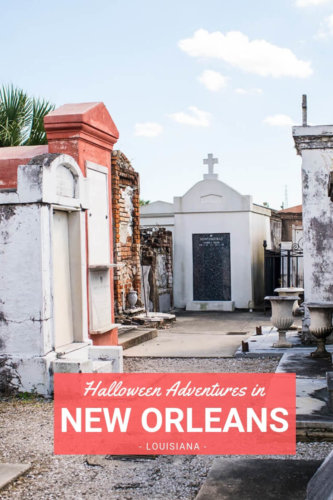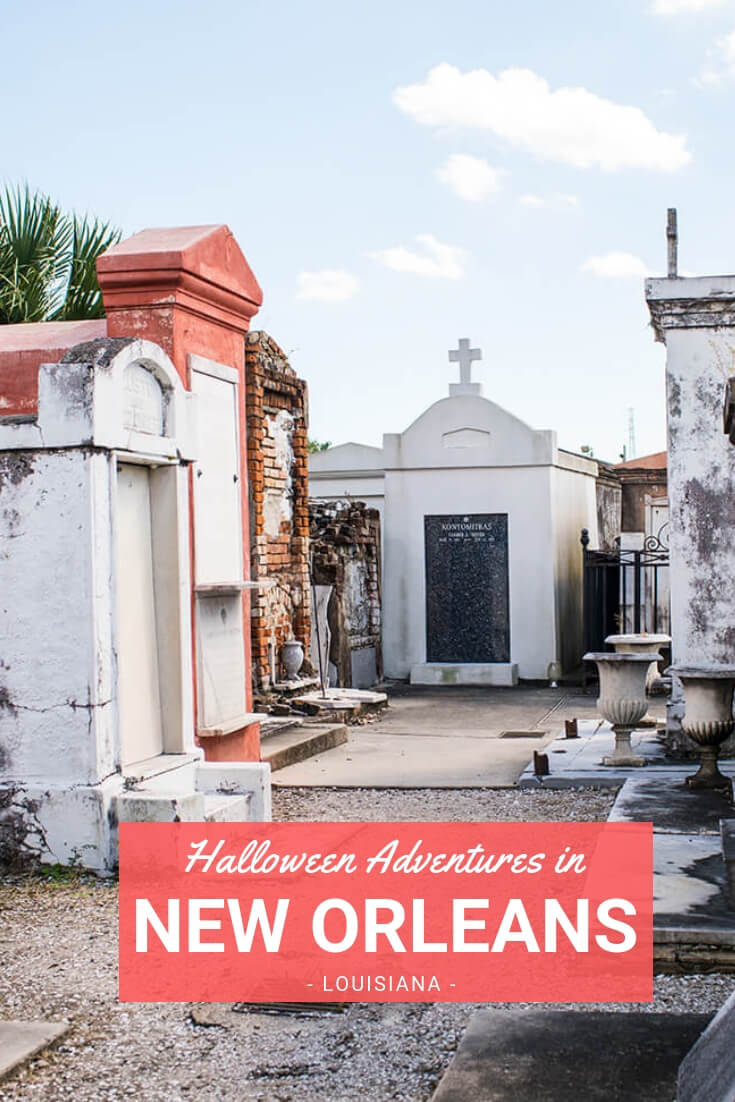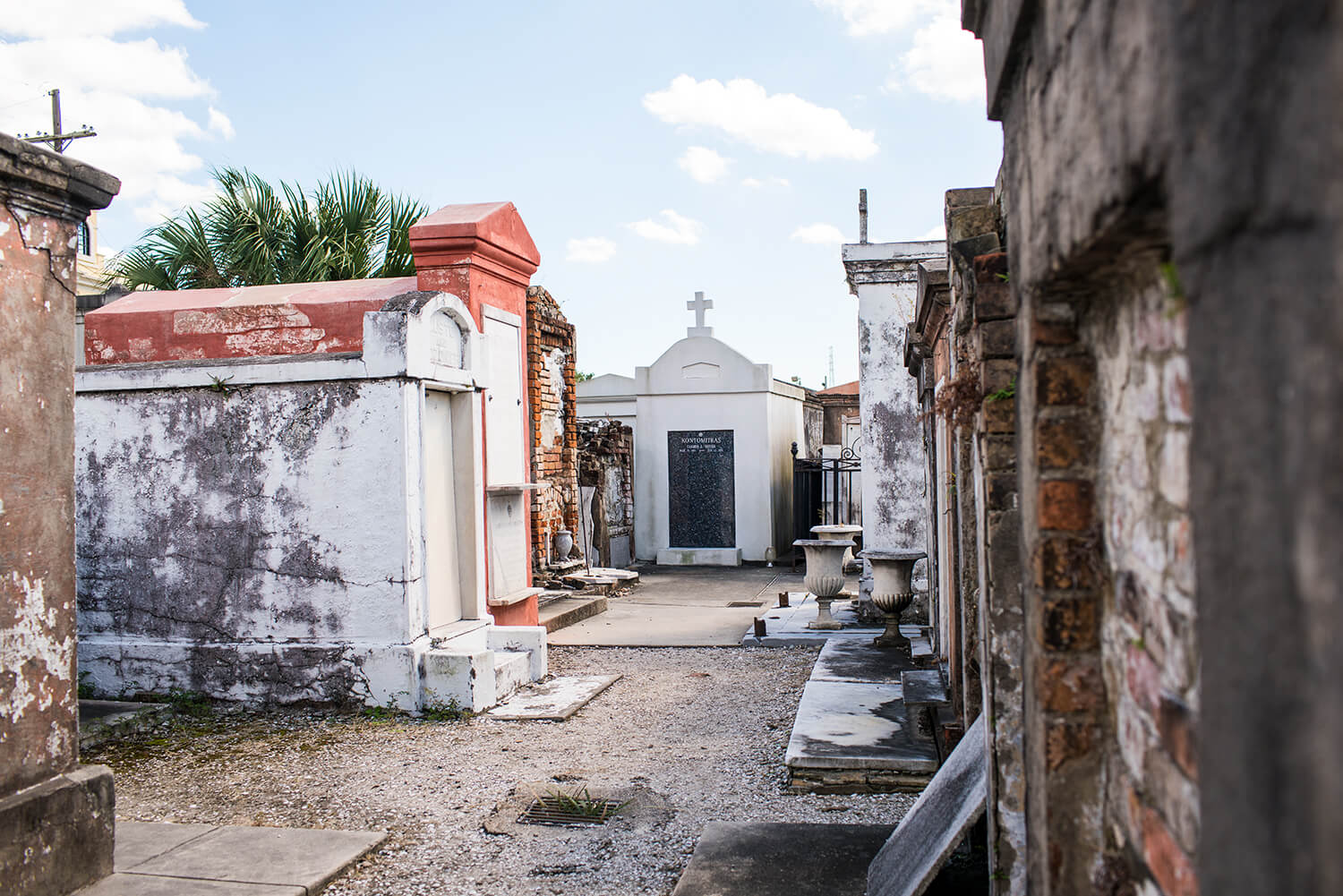
30 Oct Halloween in New Orleans: Cemeteries, Parades, and Death and Mourning
Halloween landed right in the middle of our trip to New Orleans, Louisiana. But, because the holiday fell on a Tuesday night, most of the festivities took place the Friday and Saturday prior to Halloween. With our Sunday arrival, we missed out on most of the giant Halloween celebrations that New Orleans has come to be known for. Some say Halloween is almost like a mini Mardi Gras. While it would have been fun to experience all of that craziness, we still had plenty of fun opportunities to make for a festive and spooky holiday.
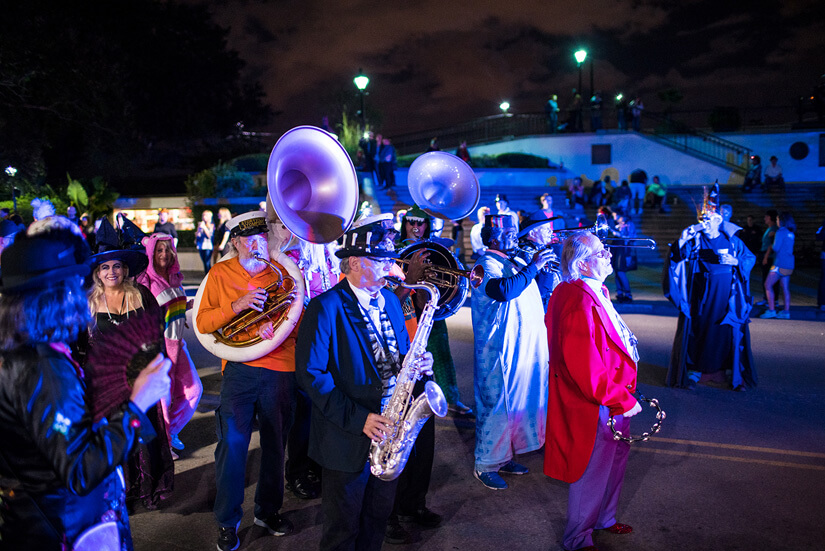
New Orleans is said to be one of the most haunted cities in North America, so of course we had to explore some of the paranormal history of the city. We passed on taking an actual ghost tour and opted for a cemetery tour instead. We also visited the Hermann-Grima Historic House which was hosting a special tour during the month of October called “Death and Mourning in the 19thCentury”. And, while we missed the giant parades that took place the weekend prior, we did manage to still catch a Halloween parade that wound through the French Quarter.
Hermann-Grima Historic House: Death and Mourning in the 19th Century
The Hermann-Grima Historic House is a fascinating display of American architecture. It is a 19thcentury home with adjacent slave quarters, stables, and a courtyard located in the French Quarter of New Orleans. The home has been restored to its original grandeur through careful research, and today it shows what a prosperous family home in New Orleans was like during the 19thcentury. Many of the items on display in the home were part of the original collection of furnishings and decorations from both the Hermann and the Grima families who once called this residence their home. Throughout all of the tours, guests will hear stories about the history of New Orleans and the families and slaves who once lived on the property.
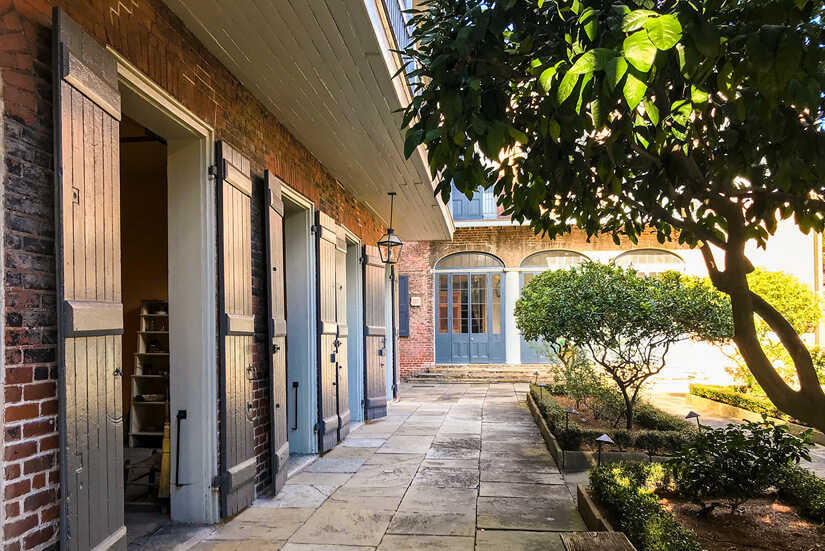
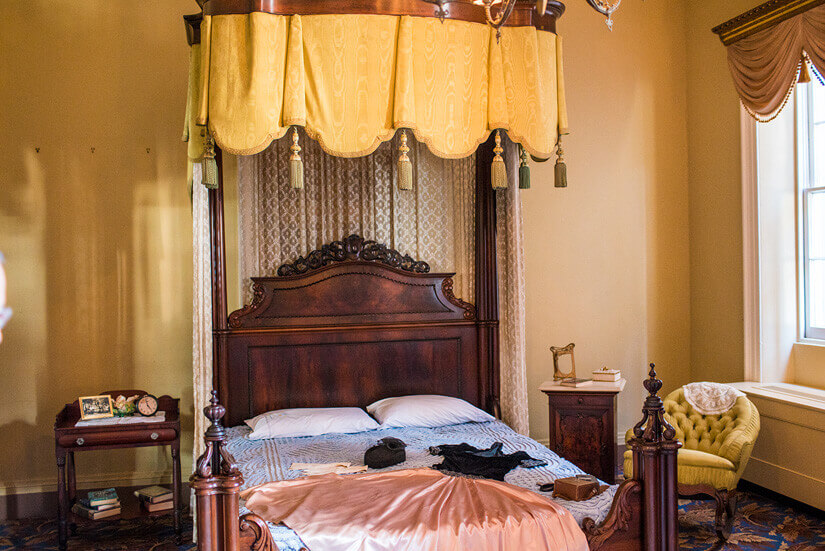
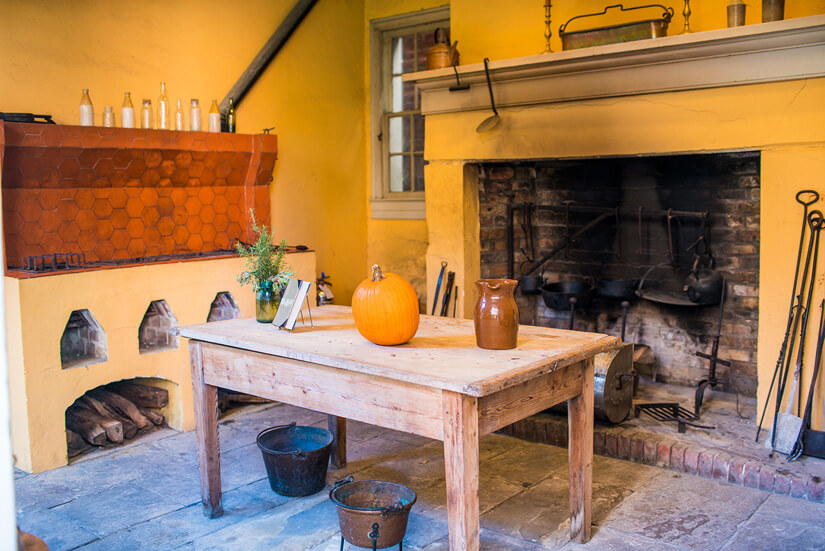
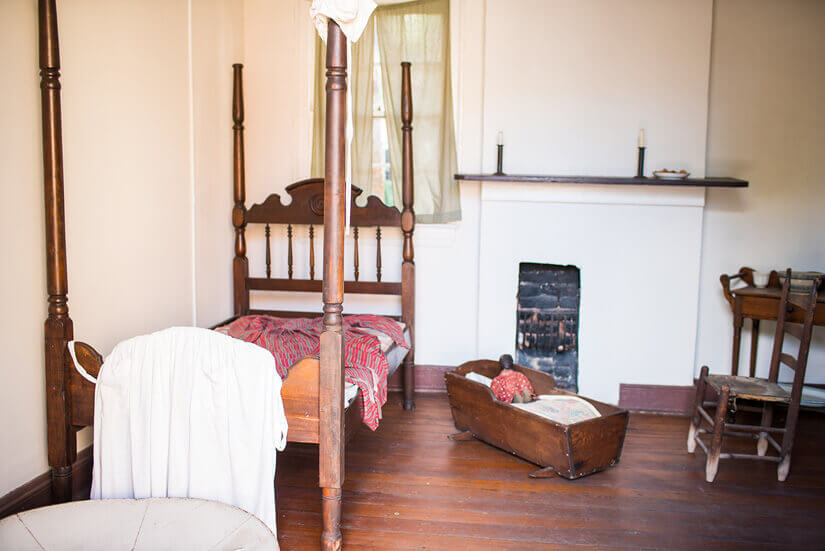
But during our visit, we got to see the house in a slightly different light. The entire month of October, the house is dressed for mourning, and our tour was focused on interpreting the habits surrounding death during the 19thcentury. The house was set up to honor the mourning period of Marie Anne Filiosa Grima. She died at the property on October 15, 1850, while she was living with her son, Felix Grima, who owned the house at that time.
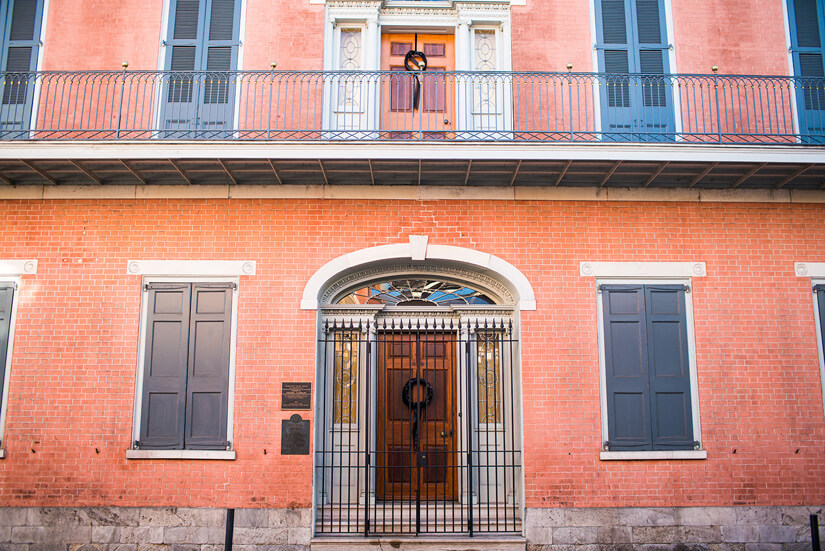
The front door of the house was adorned with a black wreath to show the family was in mourning. Inside, the living room was set up for a wake, photos in the house were covered with black veils, and special dishes were set at the table. We saw examples of the clothes the family (and even the children’s dolls!) would wear during this time. And we learned all about the mourning traditions in place during the 19thcentury—there were a lot of specific rituals to be followed. I had no idea how ritualistic and in depth the process used to be and how strict the rules were. It was an interesting look into both history and death in a city that had a high rate of mortality due largely in part to both yellow fever and cholera.
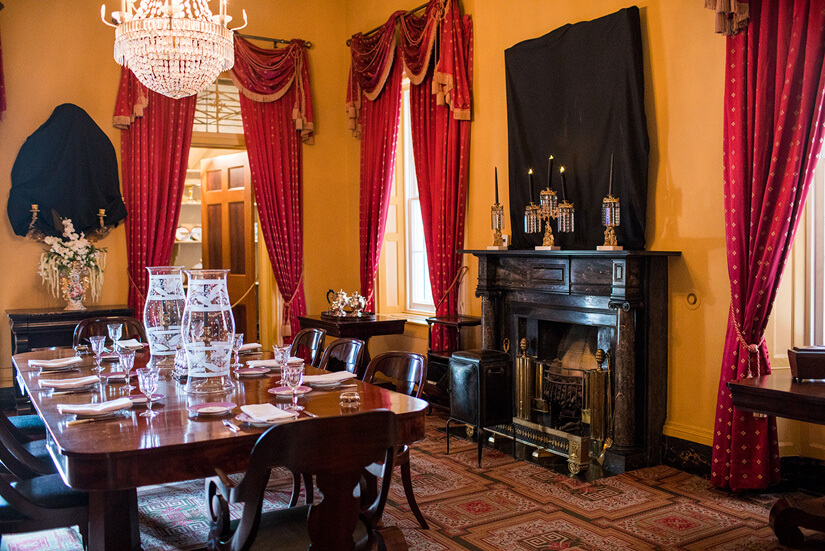
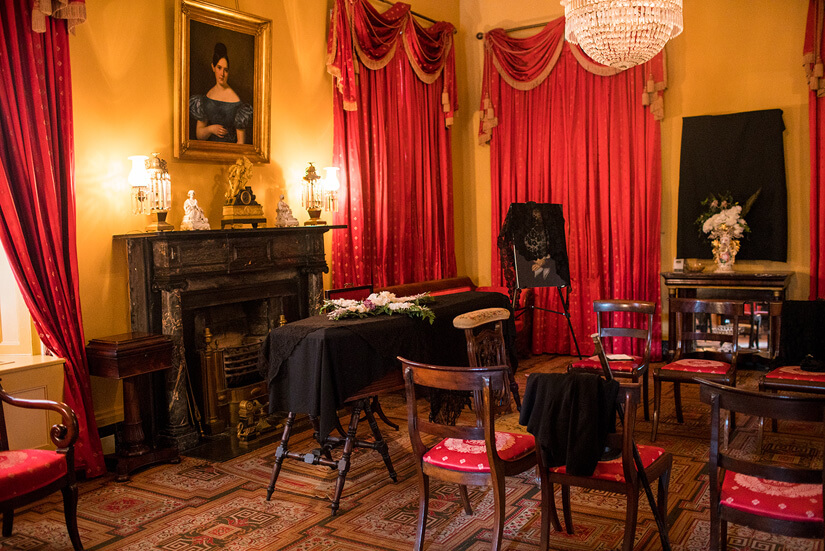
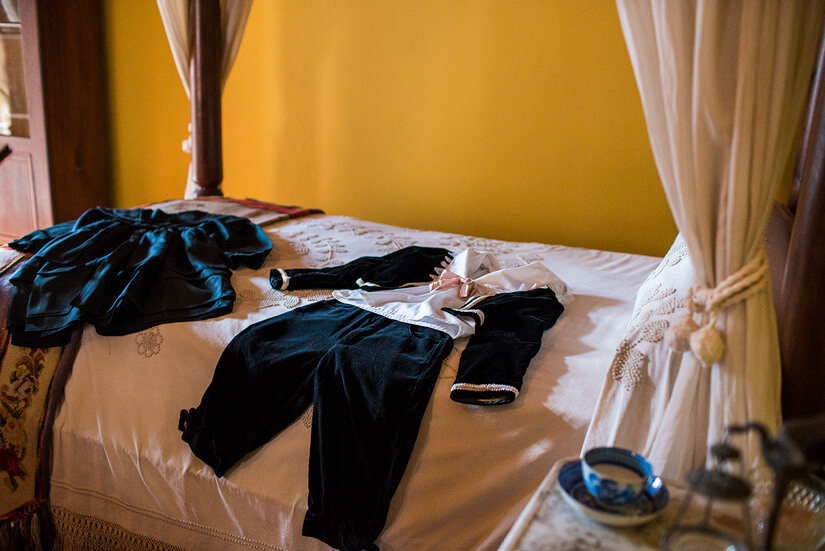
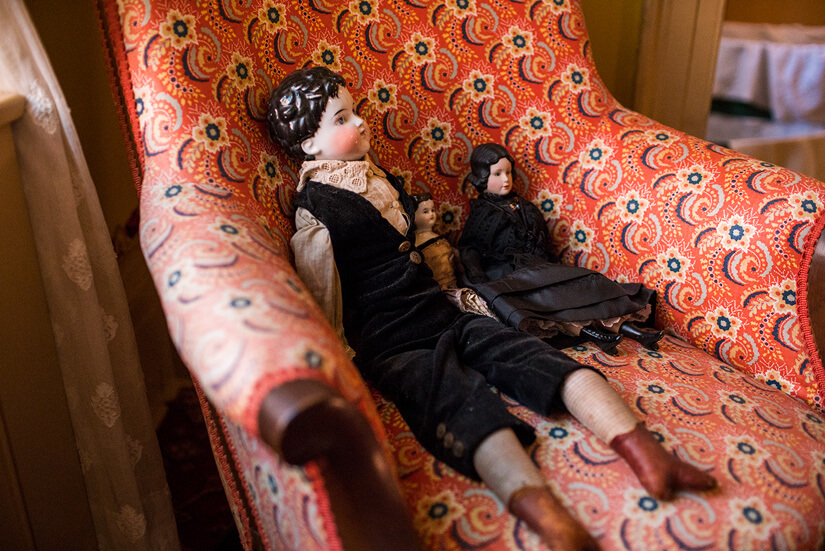
St. Louis Cemetery No. 1 Tour
Because of the high rate of death in 19thcentury New Orleans, the cemeteries grew well beyond the space they had available. This led to all sorts of curious burying practices and some of the most intriguing plots of land around, one of them being St. Louis Cemetery No. 1. If you want to see this cemetery, you have to visit as part of a guided tour, so we ended up booking tickets on Groupon for a tour with French Quarter Phantoms. The tour started at The Voodoo Lounge which is located a few blocks from the cemetery. On our way there, we learned about history of the city and the French Quarter, and we talked about Voodoo, burial customs and more.
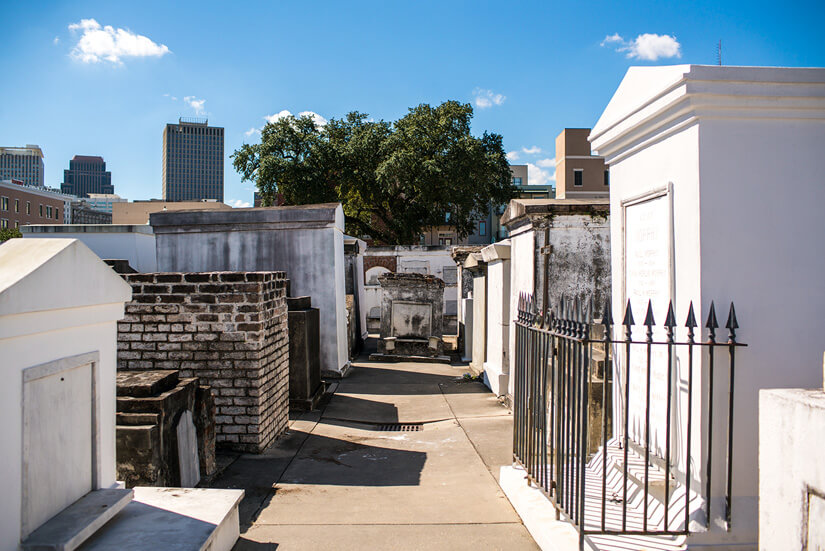
St. Louis Cemetery No. 1 is one city block in size, but even with that small size it holds over 700 tombs and is the final resting place of more than 100,000 people. It is the oldest active cemetery in the city and also cited as one of the most haunted. There are four different types of tombs in the cemetery, and the one we found most interesting was the tombs that were designed as tables, so the family could eat “All Saints Dinner” there. These table tombs only had one person buried inside, but the others typically have many bodies inside one tomb.
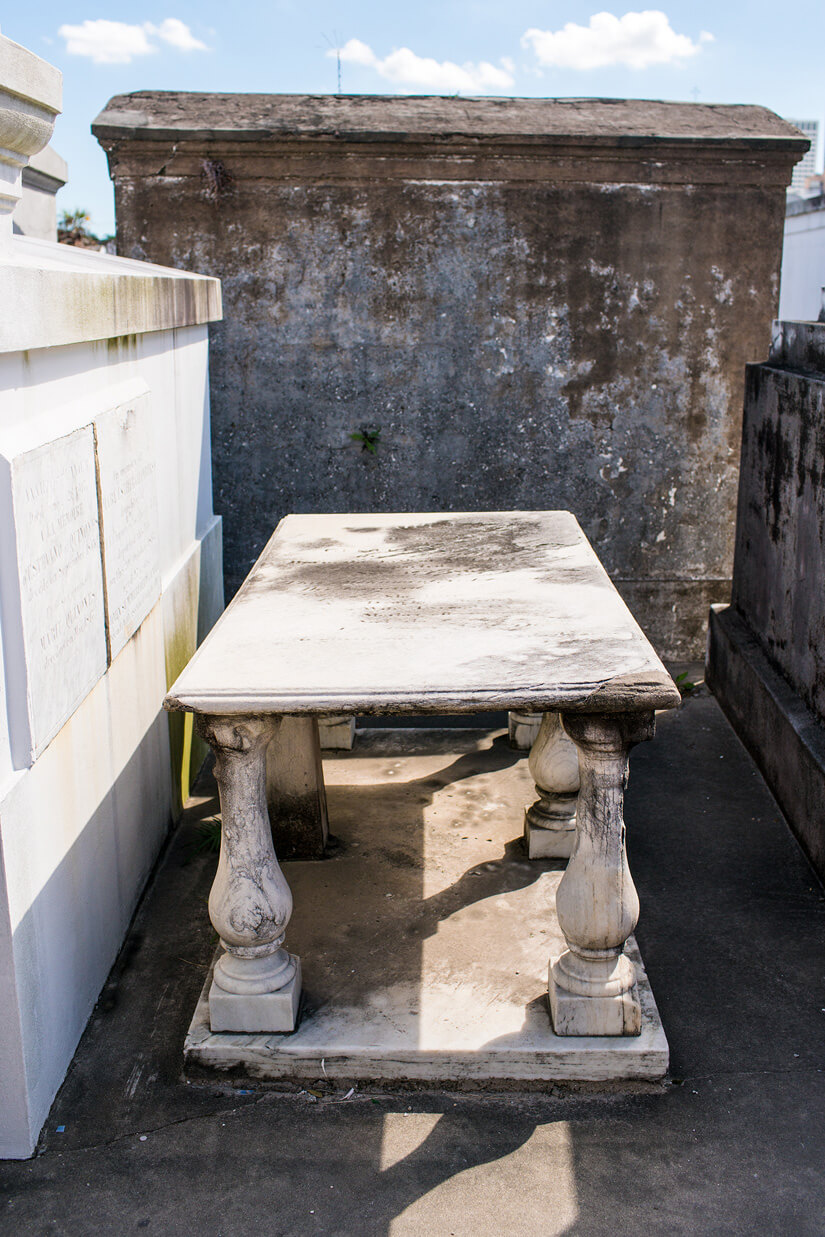
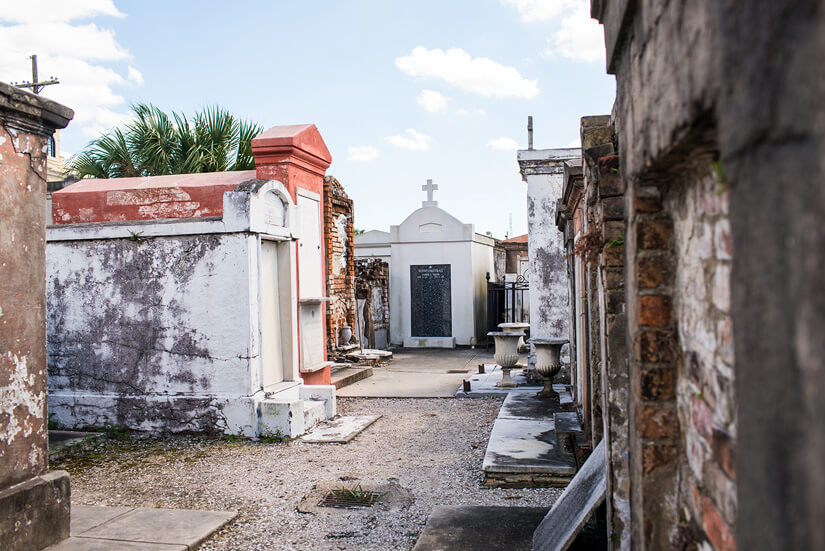
Throughout the tour, we also heard well researched stories and facts from our historian guide. It was interesting (and honestly more believable) to hear stories based on factual historical details than some spooky rumor that has been running around town. We saw the tomb of the “Voodoo Queen” Marie Laveau, the pyramid tomb Nicholas Cage had built for himself, and many other notable residents of New Orleans. It was a fantastic tour with one crazy story after another!
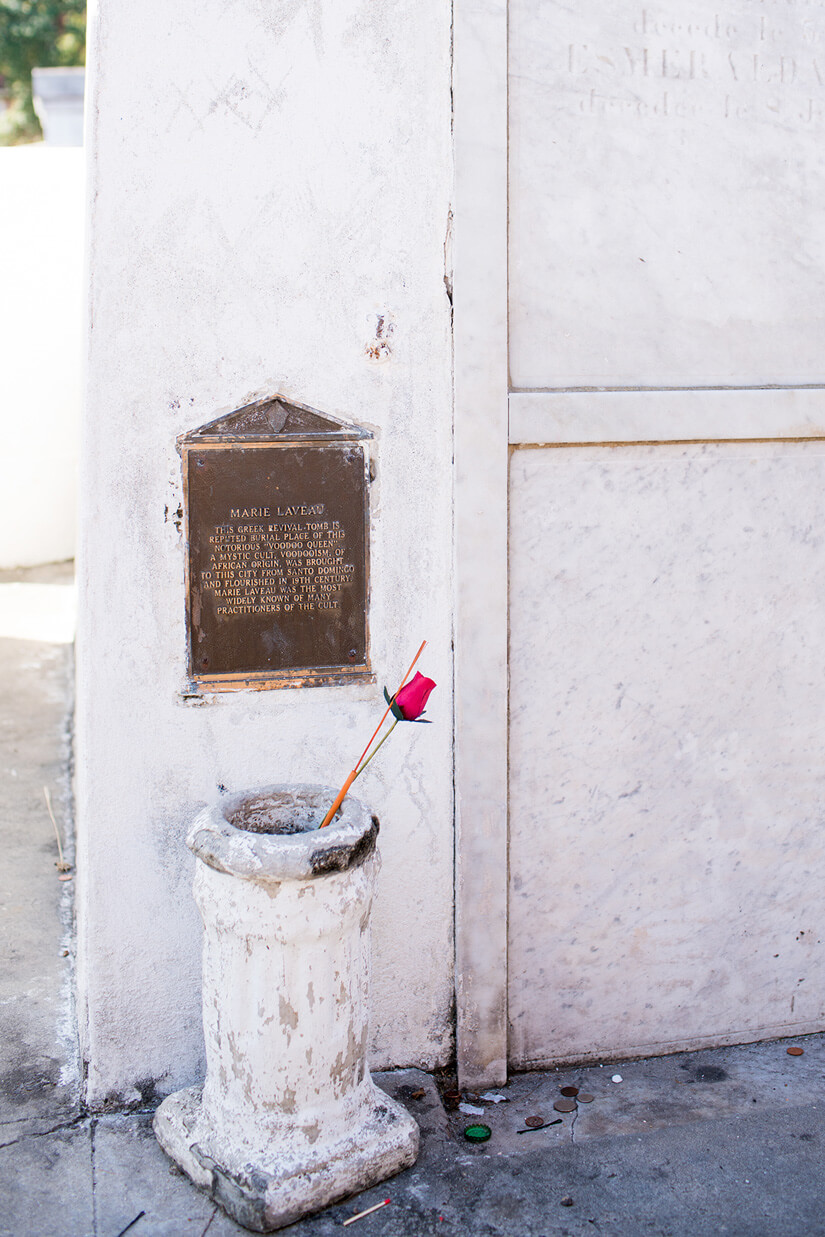
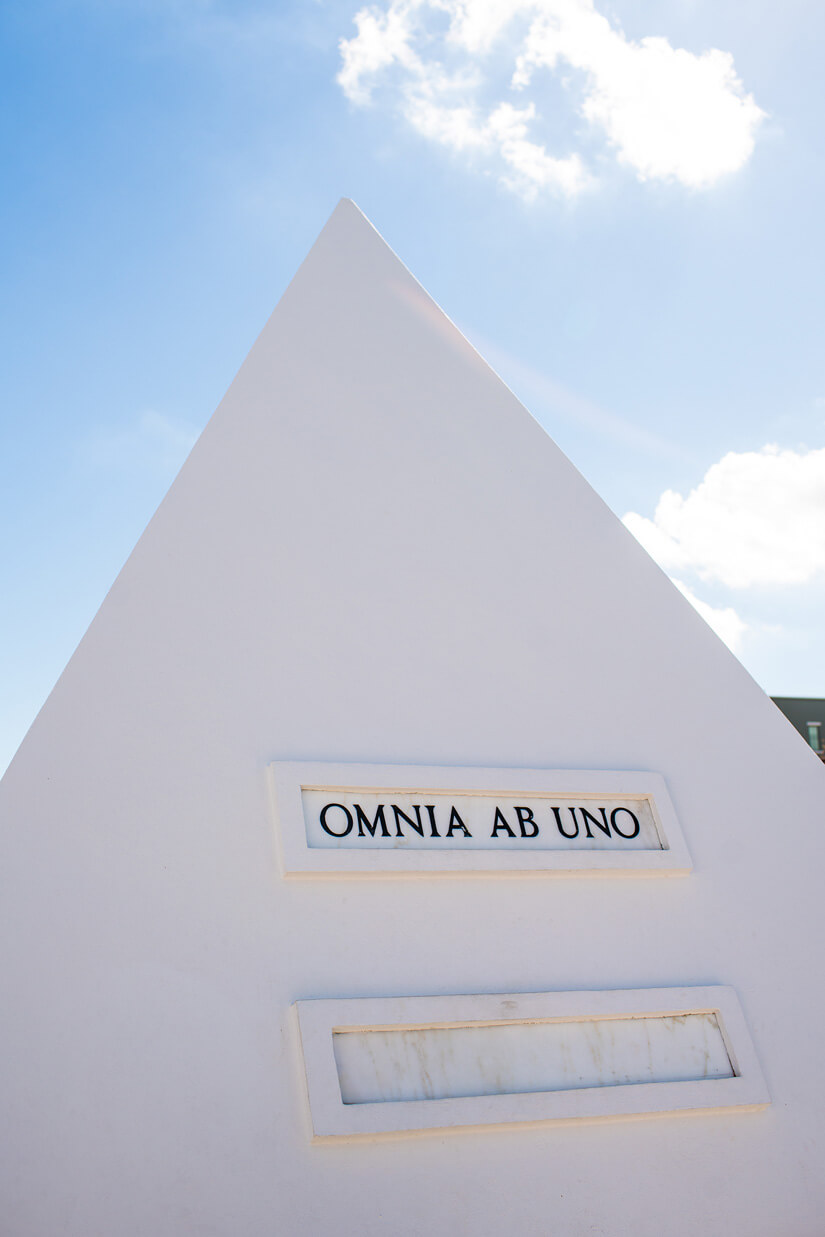
Halloween Parade
While we missed the largest and most festive parade with all of the giant floats, Krewe of Boo, we did still catch a smaller parade on Halloween night. Molly’s at the Market Bar presented a parade through the French Quarter, and we decided to join in on the fun. We waited for the show near Jackson Square on Decatur Street and watched as marching bands, floats, and all sorts of people in crazy costumes passed us by. Even though we didn’t see any of the elaborate floats from the Krewe of Boo parade, it was still fun to soak up the Halloween atmosphere on the 31st.
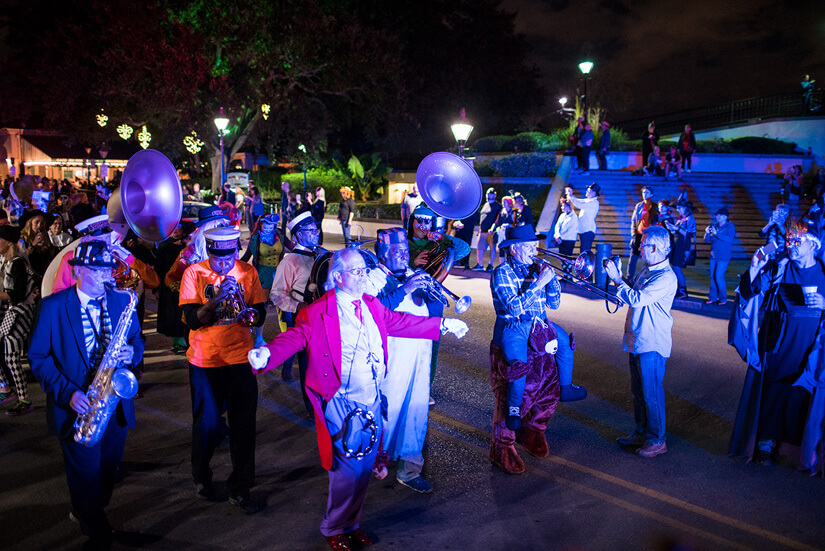
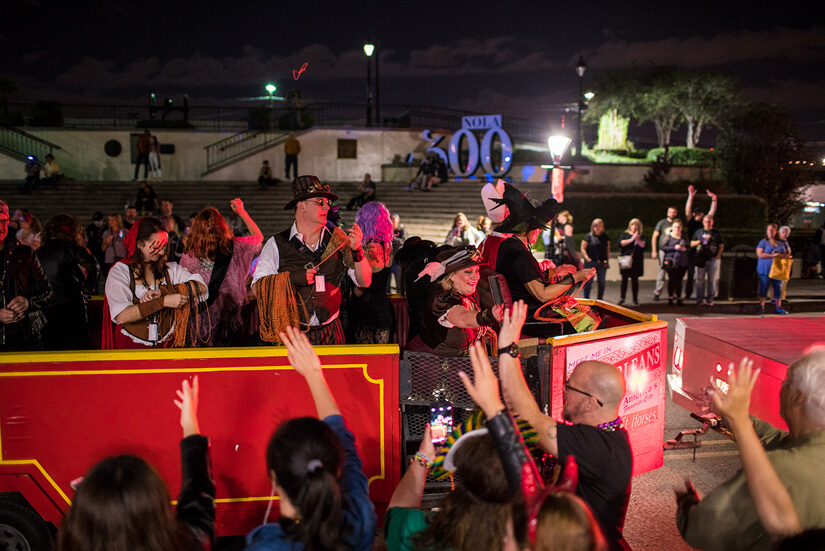
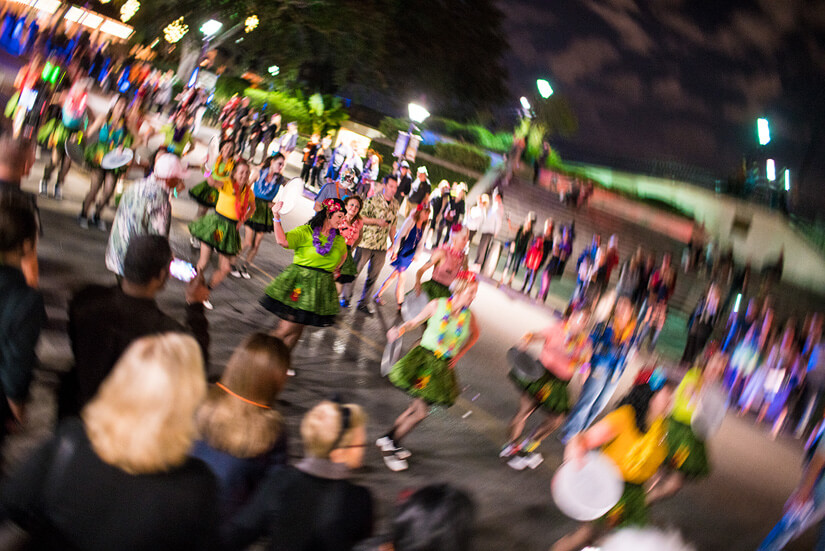
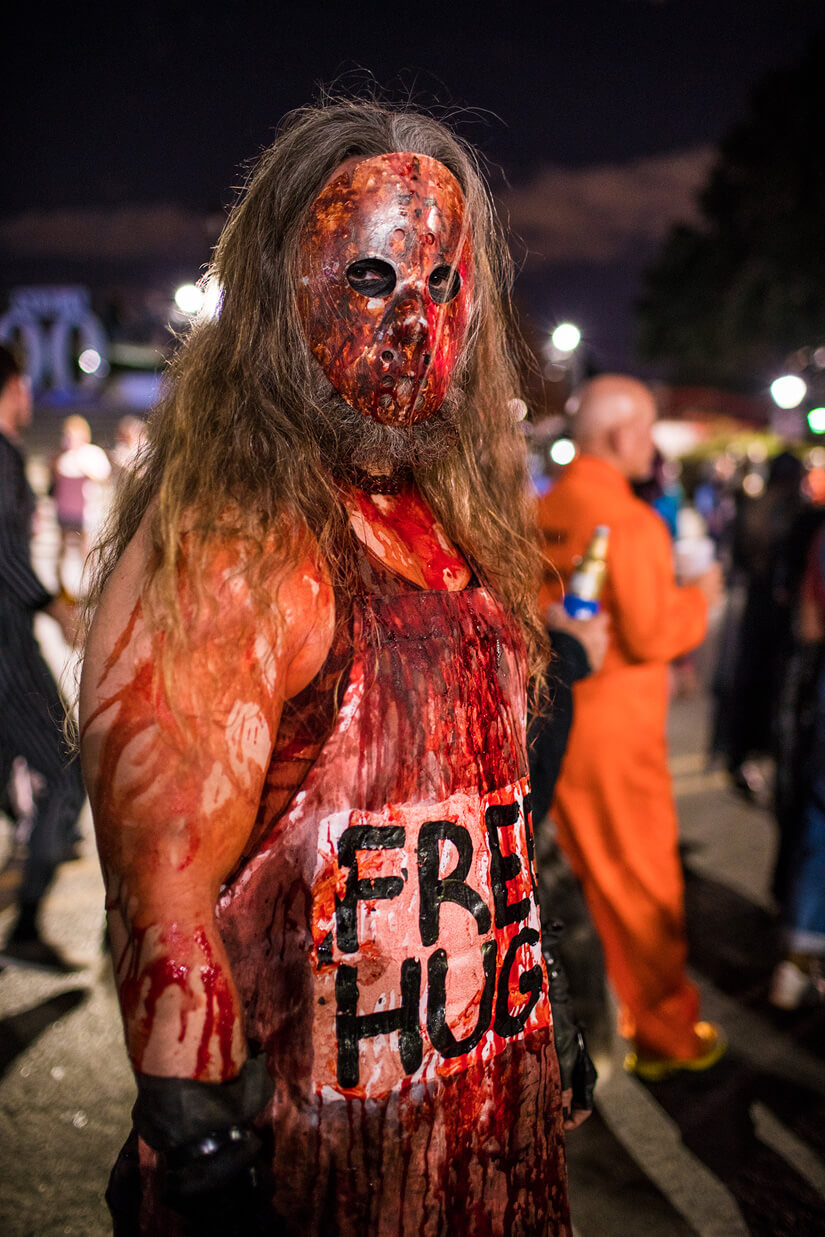
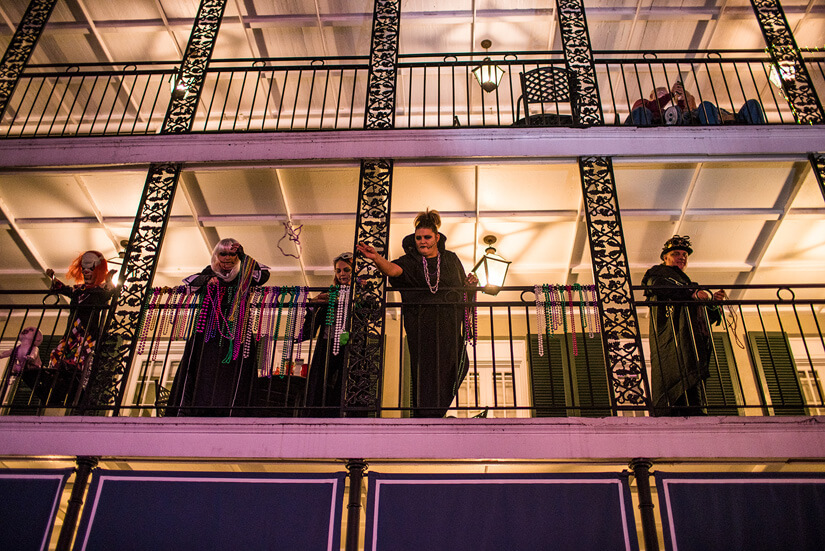
New Orleans is definitely a mesmerizing city around Halloween. You can find a wide range of adventures from ghost and cemetery tours to giant parades and parties. No matter what you are interested in, you are sure to find something intriguing in New Orleans this time of year!
Pin it!
